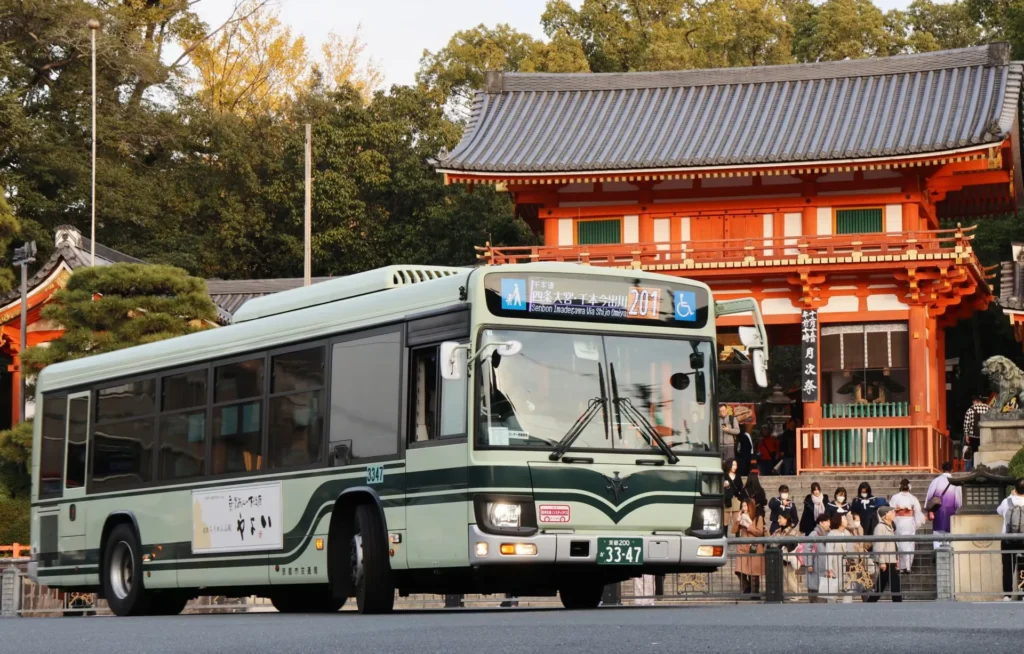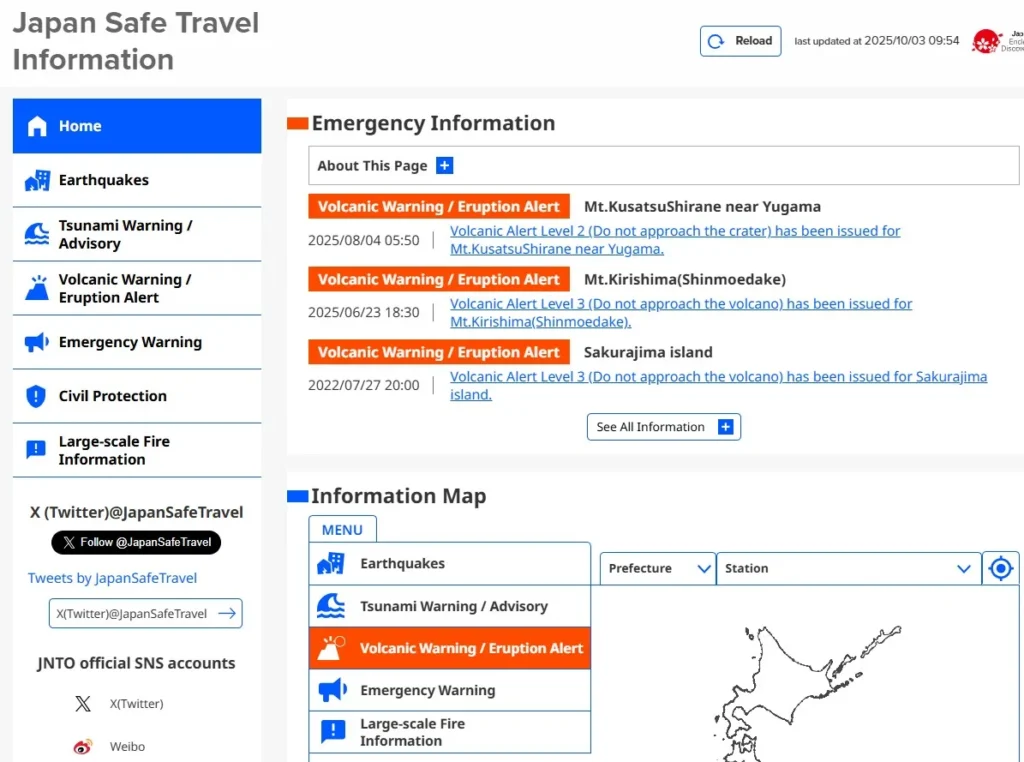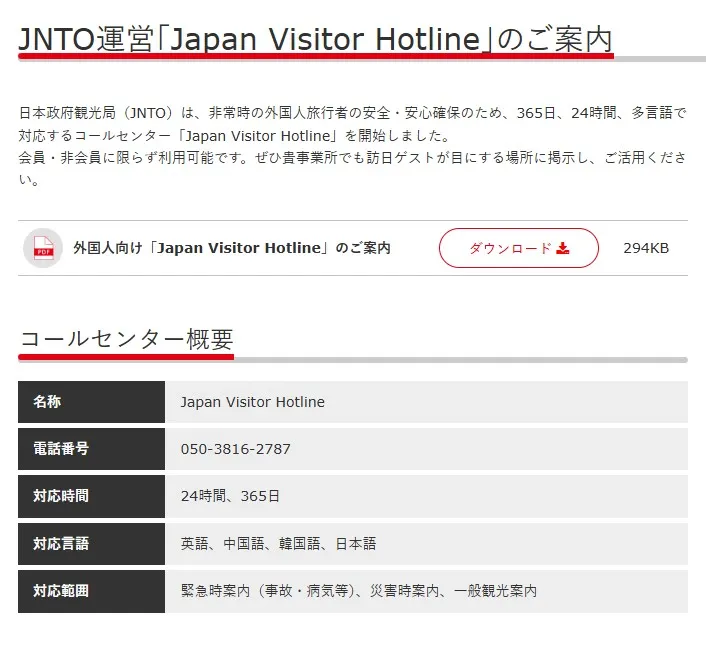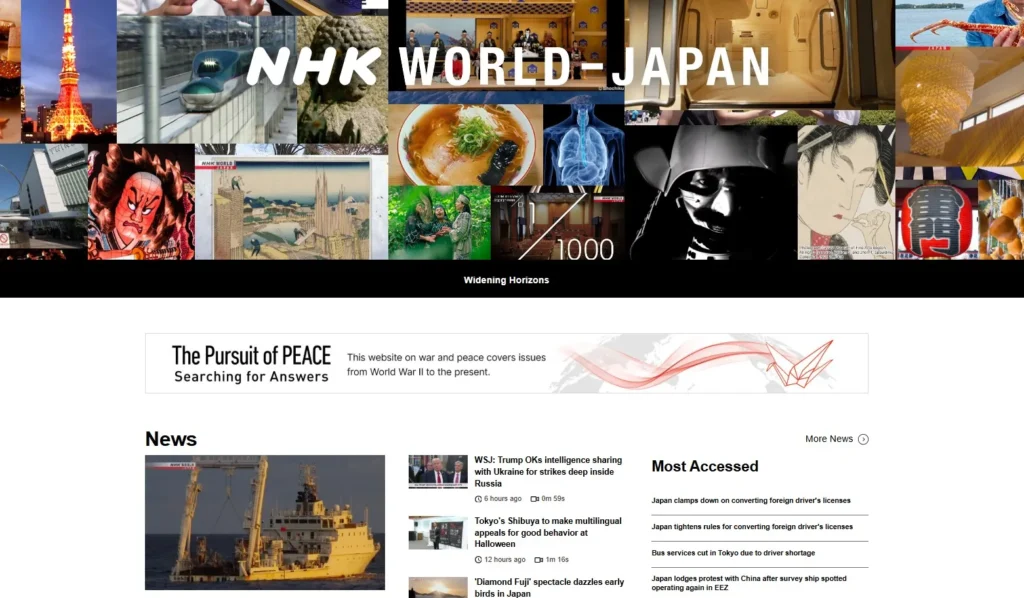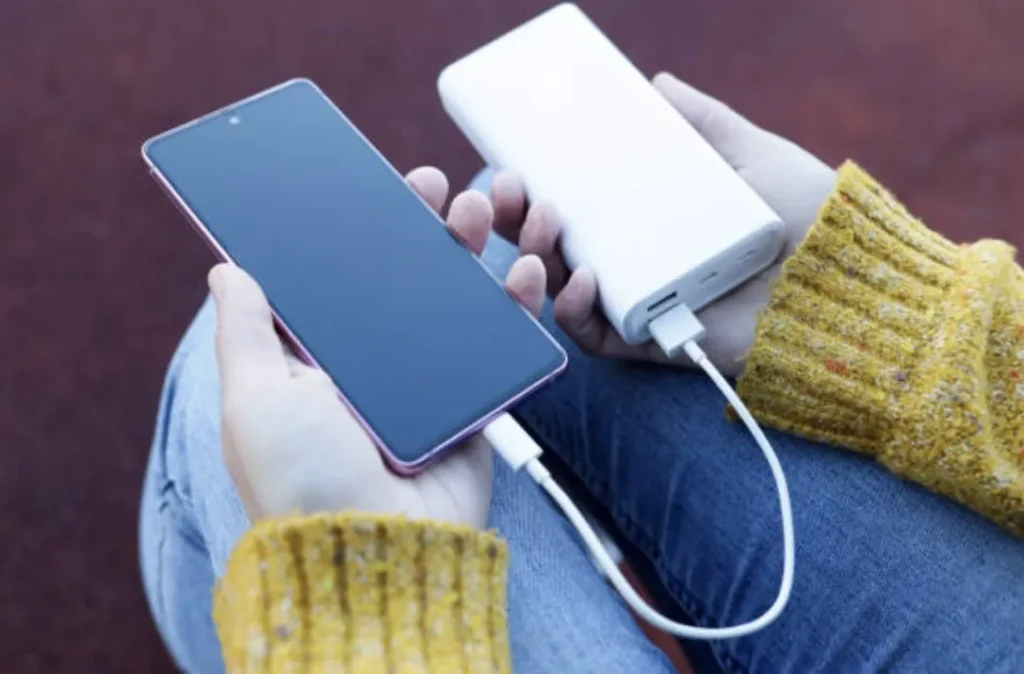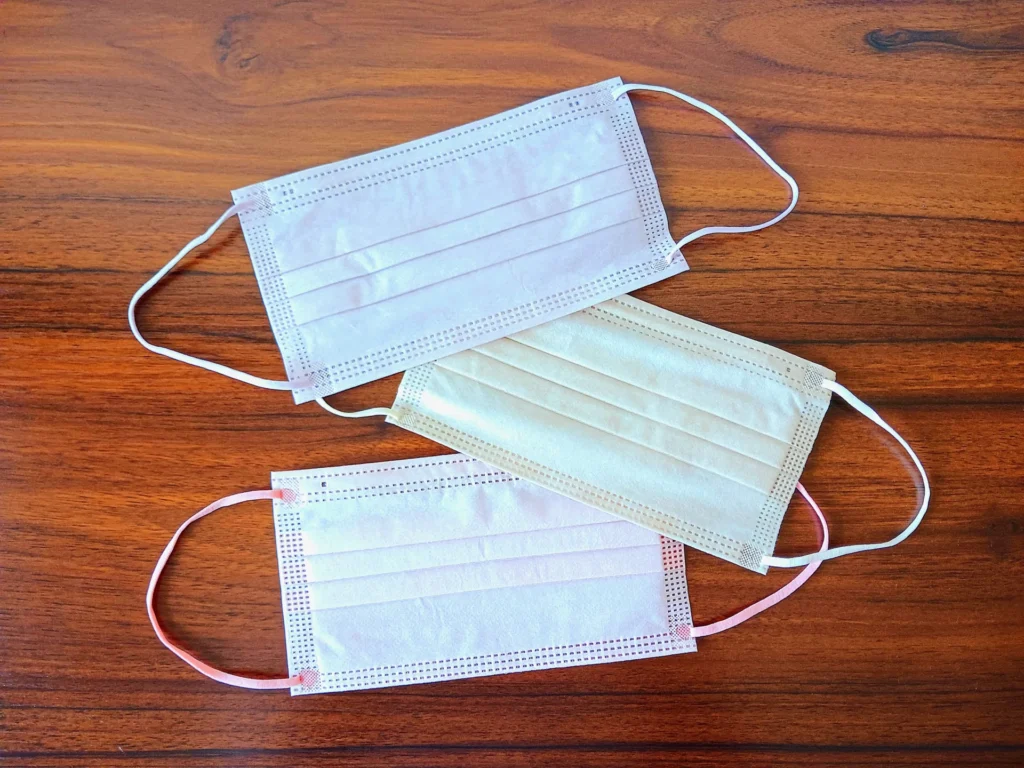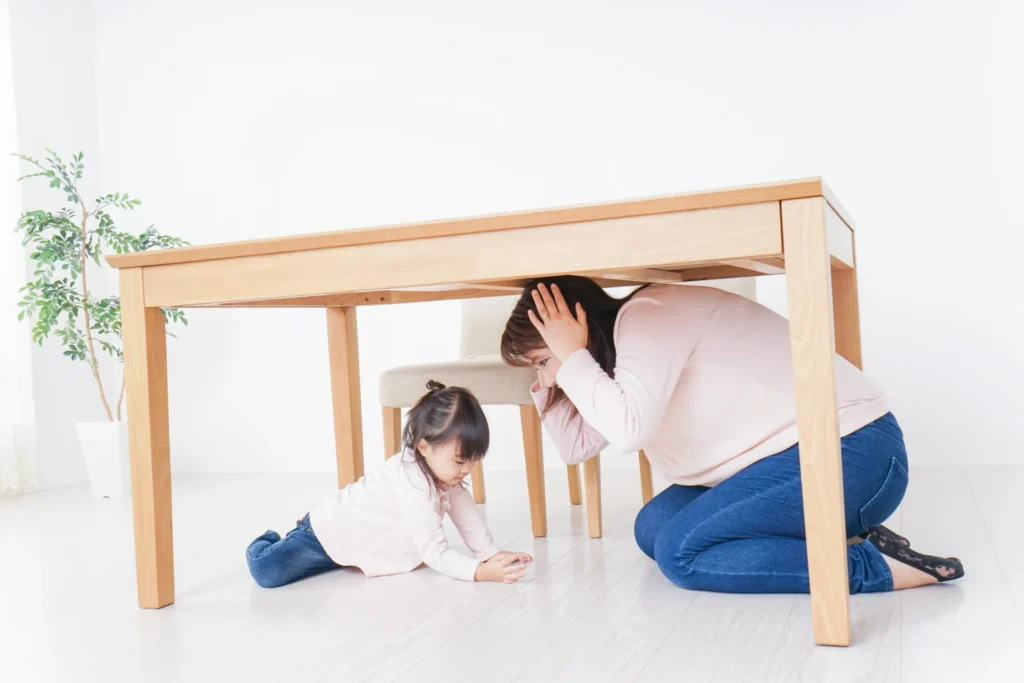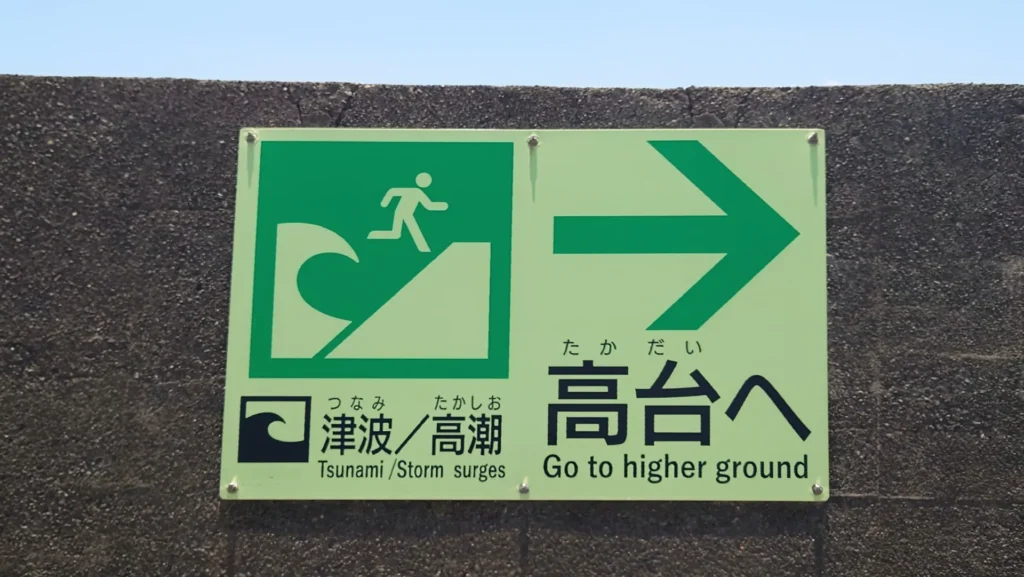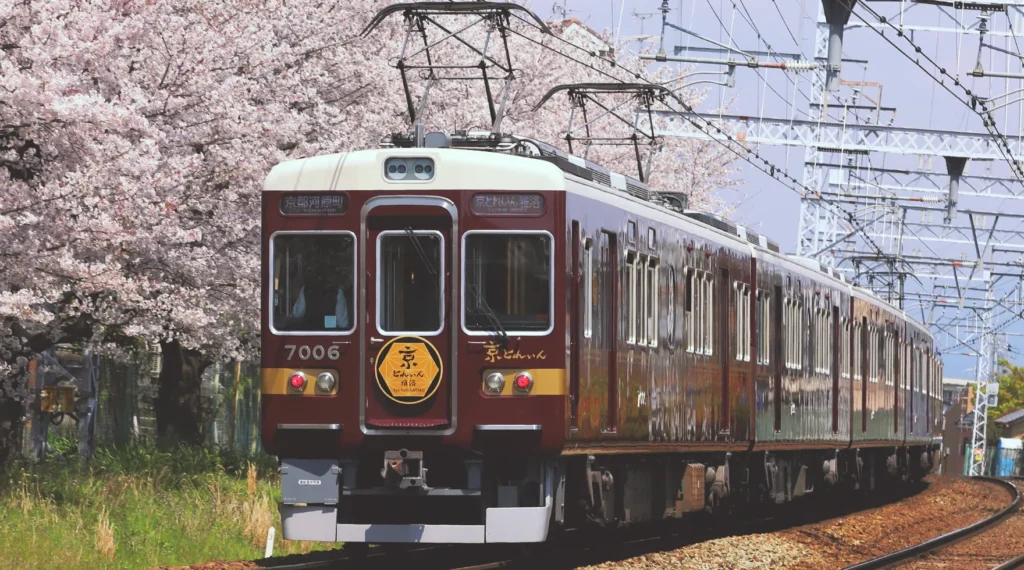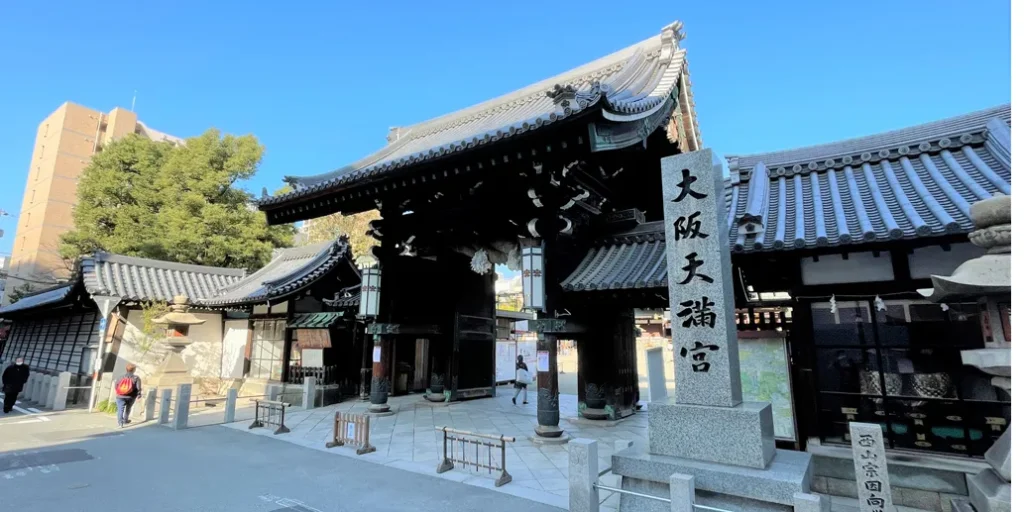日本を旅行する時に知っておきたい情報をピックアップ!急な災害時に役立つWEBサイトや、電車・バスなど公共交通機関を利用する時のマナー、寺社仏閣を参拝する時のルールをまとめました。チェックしておけば、安心して日本旅行が楽しめますよ。
1.日本旅行前に知っておきたい災害時の対応
日本で災害に遭った時、自分の身を守るために必要なホームページや、便利なアイテムをご紹介。また地震が起きた時にすぐできる身の守り方をまとめました。
・災害時に役立つホームページ・ SNS
日本政府観光局が運営するホームページ。地震や津波災害、大雨・暴風など気象警報などをマップ上でわかりやすく確認できます。また旅行者に役立つ情報リンク集も充実しています。
Japan Visitor Hotline(JNTOコールセンター)
事故や病気、災害時など外国人旅行者の安全・安心を確保するため、365日24時間つながる、心強いコールセンターです。英語・中国語・韓国語・日本語の4言語に対応しています。
電話番号:050-3816-2787
日本唯一の公共放送機関、日本放送協会(NHK)の国際放送局です。多言語でニュースや情報番組など様々な番組を世界に発信する他、日本やアジアの最新情報、日本文化などを紹介しています。
他にもJNTOが運営するSNSアカウントで、災害発生時に外国人旅行者が必要とする情報を発信します。
●Xアカウント:@JapanSafeTravel
●Weiboアカウント:「安心访日」Japan Safe Travel
・災害に備えて日本旅行中に持っておくべきもの
モバイルバッテリー
情報サイトやSNSのチェック、翻訳機能など、災害時もスマートフォンが活躍します。しかし災害直後は充電する電源の確保が難しいことが予想されます。いざという時のためにモバイルバッテリーは備えておきましょう。
マスク
秋から冬にかけて空気が乾燥していくため、マスクも持っておく方がいいでしょう。喉の乾燥を防ぐだけではなく、風邪やインフルエンザなど災害時に流行しやすい伝染病の予防にもつながります。
おやつ・飲み物
ライフラインが寸断された大規模災害時や、電車が止まり閉じ込められた時など、おやつや飲み物が役立ちます。腹持ちのよいビスケットやクラッカー、緑茶やコーヒーはリフレッシュ効果もあります。なるべく常温保存できるものがいいでしょう。
・地震が発生したときの身の守り方
地震が起きた時には、まず丈夫な机やテーブルの下に隠れて、バッグやクッションなどで頭を保護し、揺れが落ち着くのを待ちましょう。慌てて屋外に飛び出すのは落下物も想定されるので危険です。
揺れが収まったのを確認したら、割れたガラスなどの危険物を避けながら屋外に出て、安全な場所へ移動します。大地震では津波が起きる場合があります。津波が発生した場合には、まず高台を目指しましょう。
2.日本旅行前に知っておきたい電車のエチケット
時刻表通りに運行し、車内で眠っても心配のいらない日本の鉄道。利便性・安全性にすぐれた鉄道ですが、その分、海外にはない独特のルールもあります。
下記の内容に気を付けてご利用ください。
- 乗車時は列に並んで待ちます。割り込み乗車もNGです。
- ゴミは車内に放置せず、駅にあるゴミ箱に捨てましょう。
- 周りの乗客に配慮し、大きな声で話さない方がベターです。
- 電話はなるべくプライベートな空間で。通話は控えましょう。
- 在来線では特に、においの強い飲食物は避けましょう。
3.日本旅行前に知っておきたいバスのエチケット
バスの移動が便利な観光地もあります。ただし最近、京都では外国人観光客の乗車マナーが社会問題になるなどしています。通勤・通学などで利用する方がいることを忘れないようにしましょう。
下記の内容に気を付けてご利用ください。
- 乗車時は列に並んで待ちます。割り込み乗車もNGです。
- ゴミは車内に放置せず、必ず持ち帰るようにしましょう。
- 周りの乗客に配慮し、大きな声で話さない方がベターです。
- 電話はなるべくプライベートな空間で。通話は控えましょう。
- 通路は狭いので、大きな荷物(スーツケースなど)は避けましょう。
- 車内の空間は広くありません。においの強い飲食物は避けましょう。
京都はバス移動が基本になりますが、スーツケースをもって乗車することは推奨されていません。スーツケースを持っている場合は、「阪急京都観光案内所・河原町」の当日配送サービスが便利です。
https://enjoy-osaka-kyoto-kobe.com/ja/article/a/baggage-service-kyoto/
4.日本旅行前に知っておきたい寺社仏閣参拝時のエチケット
神社仏閣はもともと観光スポットではなく、宗教施設です。それぞれ参拝する際は、下記にあげる点に気を付けて、礼儀やマナーを守るようにしましょう。
日本の神社での参拝エチケット
1.大きな声で話さない。
神社は神聖な場所です。鳥居をくぐれば神域です。みだりに騒いだりせず参拝しましょう。
2.境内で飲食をしない。
境内での飲食や飲食物の持ち込みは禁止されているところも多いです。気を付けましょう。
3.建物や鳥居に触れない。
鳥居にもたれかかる、登ったりすることは厳禁です。神聖なものとして大切にしましょう。
4.写真撮影のルールを確認。
神社は祭祀を行い、参拝者が祈りをささげる場です。撮影禁止の場所も多いので、注意しましょう。
5.参道の真ん中は歩かない。
参道の真ん中は神様の通り道です。左右どちらかに寄って歩くのがよいとされています。
6.お参りのお作法。
鳥居で一礼。手水舎でお清めをした後、拝殿では、“二拝二拍手一拝(にはい・にはくしゅ・いっぱい)”という、2回お辞儀して2回柏手(拍手)を打ち、1回お辞儀する作法でお参りするのが基本です。
日本の寺院での参拝エチケット
1.大きな声で話さない。
寺院は神聖な場所です。山門をくぐると聖域です。みだりに騒いだりせず参拝しましょう。
2.境内で飲食をしない。
境内での飲食や飲食物の持ち込みは禁止されているところも多いです。気を付けましょう。
3.仏像に触れない。
仏像を触ってみる、もたれかかるなどは厳禁です。神聖なものとして大切にしましょう。
4.写真撮影のルールを確認。
本堂内やご本尊の前など、撮影禁止の看板や貼り紙がある場所では撮影しないようにしましょう。
5.お参りのお作法。
山門で一礼。手水舎でお清めをした後、本堂では柏手(拍手)ではなく静かに合掌するのが基本です。
神社とお寺のどちらかを見分ける方法としては、以下をご参考ください。
神社の特徴:鳥居がある、狛犬がおかれていることが多い、
神社の特徴:山門、仏像、五重塔などがある
礼儀やマナーを守って、厳かな雰囲気とともに神社や寺院の参拝を楽しんでください。
